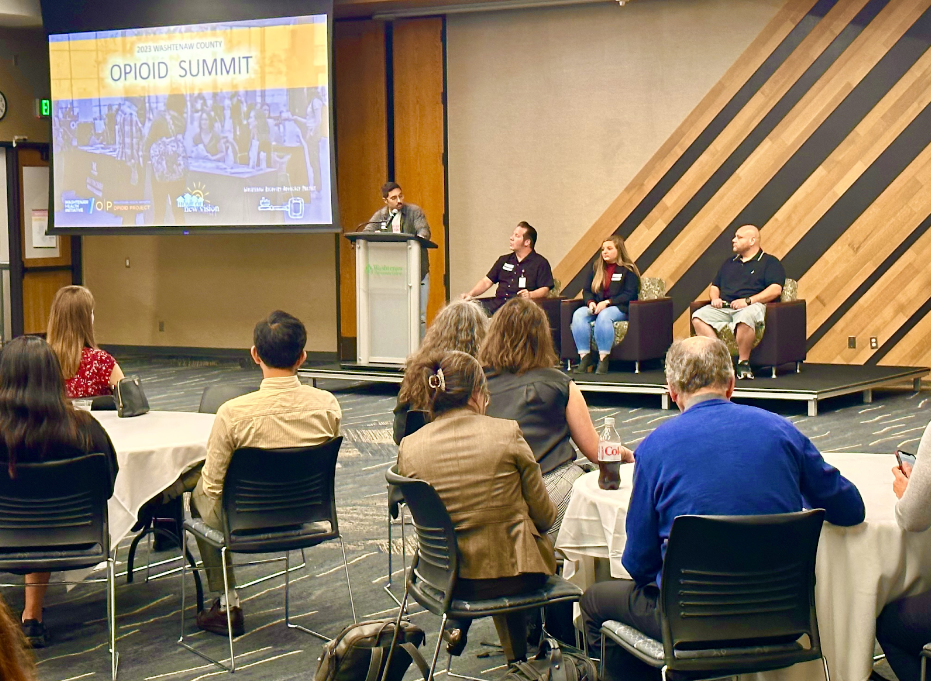The WHI’s Opioid Project partnered with the Washtenaw Recovery Advocacy Project (WRAP), a program of Home of New Vision, to bring the annual Opioid Summit back to an in-person format. Hosted on September 20th at Washtenaw Community College’s Morris Lawrence Building, the summit drew over 80 participants representing dozens of local organizations committed to ending the opioid epidemic. The in-person format allowed several community organizations to set up tables to distribute resources and information on their programs and services.

The summit was kicked off with a morning keynote presentation from MDHHS representatives that highlighted disparities in substance use vulnerability within Washtenaw County and outlined the structure and approved uses of both local and state opioid settlement funds. This presentation built on a breakout session at last year’s summit that showed that Washtenaw County was less vulnerable to harmful effects of opioid use in comparison to other Michigan counties. Since that presentation, the state has been able to calculate those vulnerability scores for every zip code in Michigan.
While the data suggests that Washtenaw has more resources in addressing opioid use compared to other counties, this new local data drew attention to the sharp disparities in vulnerability scores among zip codes within Washtenaw. Many of these differences can be attributed to inequities in social determinants of health measures. These presentations stressed the importance of investing in evidence based strategies that best meet the needs of underserved and marginalized communities as our community looks to invest local opioid settlement dollars.
In the afternoon, Chris Sudduth, program manager of the Washtenaw Recovery Advocacy Project, facilitated a panel discussion where Robert Colley, Chris O’Droski, and Hayley Lively shared their stories of recovery and discussed the importance of embracing multiple pathways to recovery. The panel discussed ways in which we as a community can help eliminate the stigma associated with substance use disorder that discourages many from seeking help.
Following the keynote presentations, participants were able to attend breakout sessions that included:
- “Do Less Harm: The Fallacy of Do No Harm” – an overview of embracing harm reduction in the allied health professions. This session provided background on the principles of harm reduction along with practical strategies that can help prevent adverse events related to substance use.
- “Evaluation of the Recovery Opioid Overdose Team” – an overview of the team tasked with providing outreach and resources to survivors of drug poisonings and the impact of their program expansion.
- “Addressing Stigma as a Community” – a panel discussion on how stigma shows up in various community aspects and practices, the role of key beliefs or ways of thinking, and how we can combat stigma in regards to substance use disorders.
- “Psychedelics and Their Therapeutic Benefits” – a brief history of medicinal use of psychedelic compounds in the field of mental health, a review of the current state of research and evidence, and discussion of current challenges faced by the field and future directions in the use of these compounds.
To view presentation materials that were made available by the presenters and panelists, please visit the Opioid Project’s website.
To learn more about the summit, or participate in planning future summits, please contact Matt Hill, Washtenaw Health Initiative Project Manager, at hillmat@med.umich.edu.
